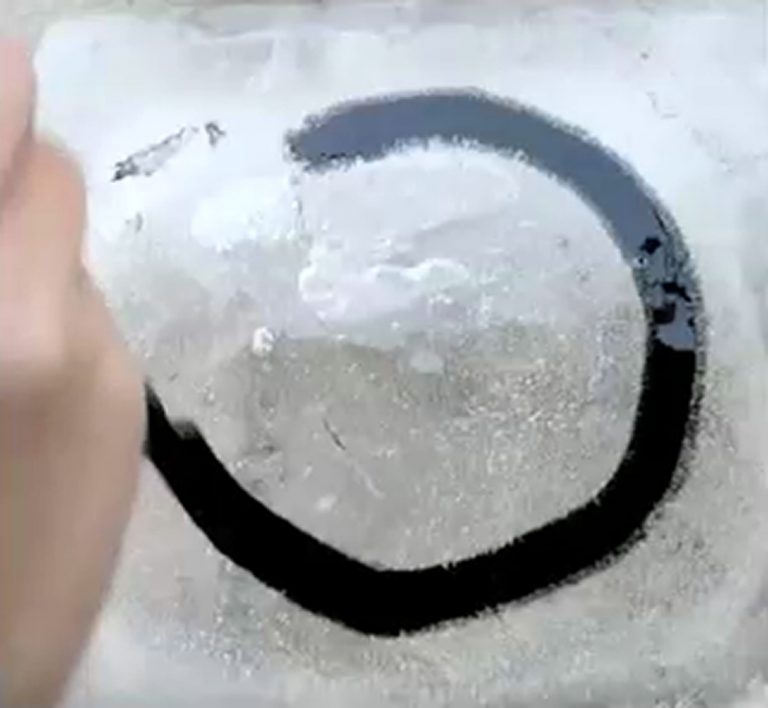We acknowledge the Traditional Owners of the land on which the Queensland Art Gallery | Gallery of Modern Art stands and recognise the creative contribution First Australians make to the art and culture of this country.

Charwei Tsai / Taiwan b.1980 / Circle 2009 / Digital video, Quicktime file, 4:3: colour, 40 seconds / Dimensions variable / Purchased 2010 with funds from the Bequest of Grace Davies and Nell Davies through the Queensland Art Gallery Foundation / Collection: Queensland Art Gallery | Gallery of Modern Art, Brisbane / © Charwei Tsai
Charwei TsaiCircle 2009
Not Currently on Display
Charwei Tsai’s video Circle 2009 begins with artist painting a circle of black ink onto a block of melting ice. Almost immediately, the ink bleeds across the surface of the block, causing the circle’s outline to thicken. As the ice melts, water and ink swirl together and outwards until it disappears beyond the frame. The 40-second process loops in an endless sequence.
The ephemeral nature of Tsai’s work mimics the transient state of water as found in nature. Eventually, ice melts to water, water evaporates into gas, and gas condensates into water. Tsai’s simple action makes a ritual of this natural cycle.
In Zen Buddhist practice, the calligraphic drawing of a circle, or ensō, marks a brief moment of mental abandon in which unconscious movement takes over from conscious thought. Zen monks repeat this form as a means of meditation — a practice of disciplined repetition through which the calligrapher seeks creative freedom.
Charwei Tsai was born in Taipei and her works are an important expression of her Taiwanese identity. At the heart of her practice is the writing of the Buddhist prajñāpāramitā or Heart Sutra, a text that Tsai memorised as a child. The central message of the Heart Sutra is the transient relationship between the individual and the universe, the acceptance of which creates a meditative state of emptiness and non-suffering.
Across her practice, Tsai uses impermanent materials to express the spiritual lessons of the Heart Sutra. Early in her career, this involved a number of organic materials such as tofu, mushrooms, and flowers that grow, wither and decompose. Over time, Tsai’s practice transitioned into other media as she continues to explore concepts of impermanence.
Discussion
1. Describe the changes to the ink in Circle. In what ways can you relate these changes to those in your own world? This could be something that you have seen on the news, heard about in conversations or observed in your own environment.
2. What is the significance of ice in this work?
3. The circle of an ensō can be drawn open or closed. What do you think it means when the circle is completed compared to when it is incomplete?
Activities
1. Paint a large sheet of paper with water and, using ink and a brush, paint a motif across the surface, filling the entire page. Observe the changes that take place during and after you have completed the pattern. Allow to dry and then repeat using a different colour. Describe the experience.
2. Using natural materials such as sand, rocks, leaves, seeds and twigs, create a mandala on the grass or pavement area, being mindful of colour, pattern, and working with a rhythm. Photograph the completed work, then go back and visit regularly to document the changes that take place due to natural or human forces. Develop these photographs into a short stop-motion film.
3. ‘Form is emptiness, emptiness is form’ lies at the centre of the Heart Sutra. Create a visual response to this statement.
4. Research a natural cycle, gathering words and phrases that explain this cycle. Identify an object that relates to your chosen cycle and create a print or collage that layers text onto that object.